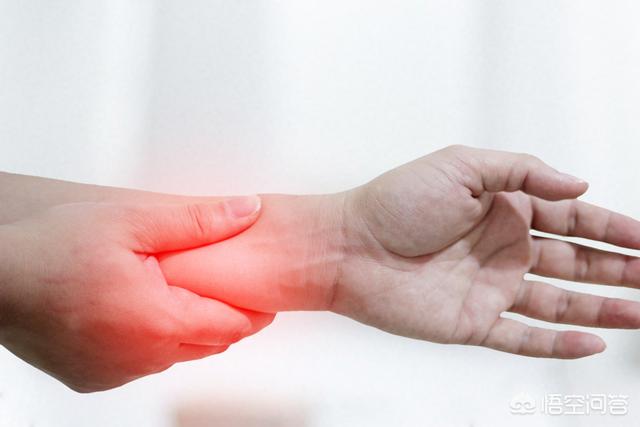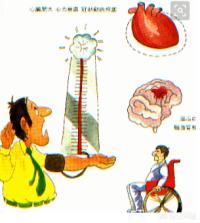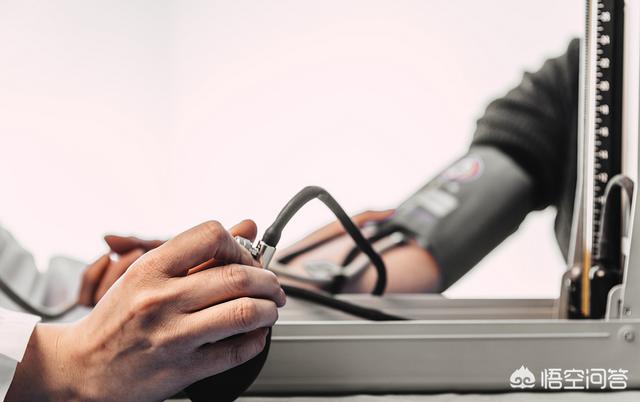What are the clinical manifestations of stage 3 hypertension?
Hello, hypertension is graded because of the level of blood pressure values (I, II, III); it is also stratified in relation to risk factors and complications (low risk, intermediate risk, high risk), and there is no official way of defining the stage 3 hypertension you are referring to.
As a matter of fact, many hypertensive patients do not have obvious clinical manifestations, some people even have blood pressure up to 200 and still do not feel anything, but there are also some people who feel uncomfortable as long as their blood pressure is slightly higher than normal, for example, such as dizziness, numbness and so on. Below is a summary of the symptoms that may occur before, during and after the onset of hypertension for your reference.
1. Pre-onset hypertension
The dangers of pre-morbid hypertension.The most obvious manifestation is a headache, always in the back of the head.At the same time, the patient is accompanied by nausea and vomiting.Most female patients will havedazzlingThe manifestations of the disease are especially felt when suddenly squatting or standing up; both earstinnitusthat lasts longer; high blood pressure can lead to myocardial hypertrophy, heart enlargement, myocardial infarction, and cardiac insufficiency, all of which are causes ofpalpitations and shortness of breathThe cause of the symptoms; the presence of high blood pressure leads to cortical dysfunction and autonomic dysregulation in the patient's brain, causingsuffer from insomnia。

2. Middle stage of the onset of hypertension
The more prominent symptoms of this period areNumbness of the limbs is also the most serious danger of this period。Patients will obviously feel numbness in the fingers and toes, and some patients will also have the sensation of ants on the skin and inflexibility of the fingers. Other parts of the body may also appear numbness, may also feel abnormal, and even hemiplegia; small arteries throughout the body have a tendency to be hard words, and occasionally ischemia, hypoxia and other symptoms, at this time, it is recommended that the patient go to the hospital as soon as possible to be actively treated, but also can carry out a moderate amount of exercise, the symptomatic relief is helpful.

3. Late onset of hypertension
The dangers of high blood pressure are quite serious when it develops in the later stages, and the most significant manifestation of this is that it can beleading to increased atherosclerosis of small arteries throughout the body.It causes ischemia, hypoxia and impaired functioning of vital organs such as the heart, brain and kidneys.Formation of atherosclerosis, easy to cause vascular bleeding, thrombosis; can also form aneurysms, once the blood pressure rises suddenly, the aneurysm rupture that is life-threatening; high blood pressure will lead to change or then the heart load, triggered by ventricular hypertrophy, with the further development of the disease deterioration, and even cause heart failure, coronary heart disease, cardiac rhythm disorders and other serious complications.
I hope my answer helps you~

Hypertension is not new to many people nowadays. Early stage of hypertension may have no symptoms, some of which are found during medical checkups, while others go to the hospital because of symptoms such as dizziness, tinnitus, palpitations, blurred vision, fatigue and weakness, or easy to be irritable, etc., which are found to be suffering from high blood pressure.
According to WHO (World Health Organization) staging, hypertension can be divided into three stages: stage I hypertension, stage II hypertension, and stage III hypertension, with acute hypertension (malignant hypertension) counting separately and increasing in severity by stages.
Hypertensive patients, because the blood pressure value is at a high level for a long time, when accompanied by damage to the heart, brain, kidneys and other organs, the development of the late stage, often lead to organ dysfunction, and even the occurrence of failure.
The clinical manifestations of stage III hypertension can be seen in the following ways [1]: firstly, the value of blood pressure, which reaches the diagnosed hypertension. Second, the combination of any of the following symptoms: (1) cerebral hemorrhage or hypertensive encephalopathy; (2) left heart failure; (3) azotemia; and (4) fundus hemorrhage or exudation, with or without optic nerve papillary edema.
Clinical symptoms of hypertension often include headache, dizziness, and neurosis symptoms. It has been reported in the literature [2] that the headache symptoms of stage III hypertension mostly occur at night or in the dawn of Buddha, and are heavy in the morning and then gradually reduced; the site is usually migraine, or around the forehead orbital region, the neck, the temporal region, and in the occipital region, mostly bilateral; the nature of the headache is mostly a throbbing headache; a few accompanied by nausea and vomiting, and the migraines mostly occur before the blood pressure rises.
[Reference]
[1] CHEN Guowei,CAO Feiqing. Clinical manifestations, classification and staging of hypertension--clinical selections of circulatory system diseases (3)[J]. New Medicine,1994(08):434-436.
[2] BAI Chengzhi, PEI Shouxi, WEI Taixing. Clinical manifestations and staging of hypertension[J]. Henan medicine,1983(06):324-325.
By Wang Yu, Department of Pharmacy, No. 477 Hospital of the People's Liberation Army, and members of the Pharmacy Network
The authoritative interpretation of Pharmaceutical Affairs, unauthorized reproduction, plagiarism will be punished.
Hypertension, as an extremely common chronic disease, is facing an increasingly high incidence. Generally speaking, the symptoms of hypertension may not be obvious at the initial stage and be ignored, but if not treated in time, unstable blood pressure control will lead to a series of complications, which will seriously threaten human health.

What are the clinical manifestations of stage 3 hypertension?
According to the clinical staging criteria for hypertensive disease revised in 1979 in China, hypertensive disease is divided into three stages according to the patient's clinical manifestations as well as the progression of the disease, which are as follows:
Phase I:The blood pressure reaches the level of confirmed hypertension without clinical signs of cardiac, cerebral, or renal complications.
Phase II:Blood pressure at the level of confirmed hypertension with left ventricular hypertrophy, stenosis of the fundus arteriosus, proteinuria, or elevated creatinine, with one of the three.
1. Fundus examination reveals that the fundus arteriosus exhibits generalized or localized stenosis;
2. Physical examination with X-ray, electrocardiogram or ultrasonography reveals manifestations of left ventricular hypertrophy;
3. Proteinuria or mildly elevated plasma creatinine concentrations were monitored.

III:Blood pressure at the level of confirmed hypertension with cerebral hemorrhage or other hypertensive encephalopathy, left heart failure, renal failure, hemorrhage or oozing from the fundus of the eye, and optic nerve papillary edema, including one of these.
1. Persistent elevation of blood pressure leads to cardiac pathology and left heart failure;
2. Renal failure due to abnormal blood pressure;
3. Unfavorable blood pressure control eventually leads to the occurrence of cerebrovascular accidents, including cerebral hemorrhage or other hypertensive encephalopathies;
4. It manifests as hemorrhage or oozing of blood from the fundus and edema of the optic nerve papilla;
5. When acute hypertension occurs, i.e., when the condition develops rapidly resulting in a sustained diastolic blood pressure of 130 mmHg or more, it may also manifest itself as fundus hemorrhage or papilledema.

In conclusion, proper control of blood pressure is the basis for determining the progression of hypertension. If patients ensure that their blood pressure is within the normal range, the progression of the disease can be slowed down, whereas improper control will gradually induce complications and cause irreversible damage to the heart, brain, kidneys and other organs. If the patient is treated in time during the first stage, the progression of the disease can be effectively controlled, and there is even a possibility of recovery.
This condition of stage 3 hypertension may cause cerebral hemorrhage ah, or hypertensive encephalopathy. There is also the possibility of heart failure and kidney failure. Therefore, once you reach the third stage of hypertension, you must take medication according to the clinical symptoms. Usually must pay attention to the blood pressure control stable to avoid some complications.
Answer:
Patients with hypertension are said to have stage III hypertension if their blood pressure is measured at 180 mm Hg systolic and 110 mm Hg diastolic or higher. Stage III hypertension is very serious, and patients are usually accompanied by cerebral hemorrhage or other hypertensive encephalopathy, cardiac failure, renal failure, fundus hemorrhage, and optic nerve papillary edema. Need to go to the hospital cardiology department hospitalization, blood pressure is particularly high, you can use sodium nitroprusside slow drip, after the blood pressure drops steadily, should be reasonable application of antihypertensive drugs and aspirin and other drugs treatment.
Stage 3 hypertension is classified as being a severe form of hypertension, and when the blood pressure is too high, it is possible to experience panic attacks, chest tightness, and increased heart rate. It is also due to the fact that some patients may show symptoms in the head area, which are characterized by headaches, dizziness or blurred vision. If the blood pressure is too high, when it affects the kidneys, it will show an increase in nocturia, have proteinuria, and show symptoms of lumbago and back pain.
This question and answer are from the site users, does not represent the position of the site, such as infringement, please contact the administrator to delete.